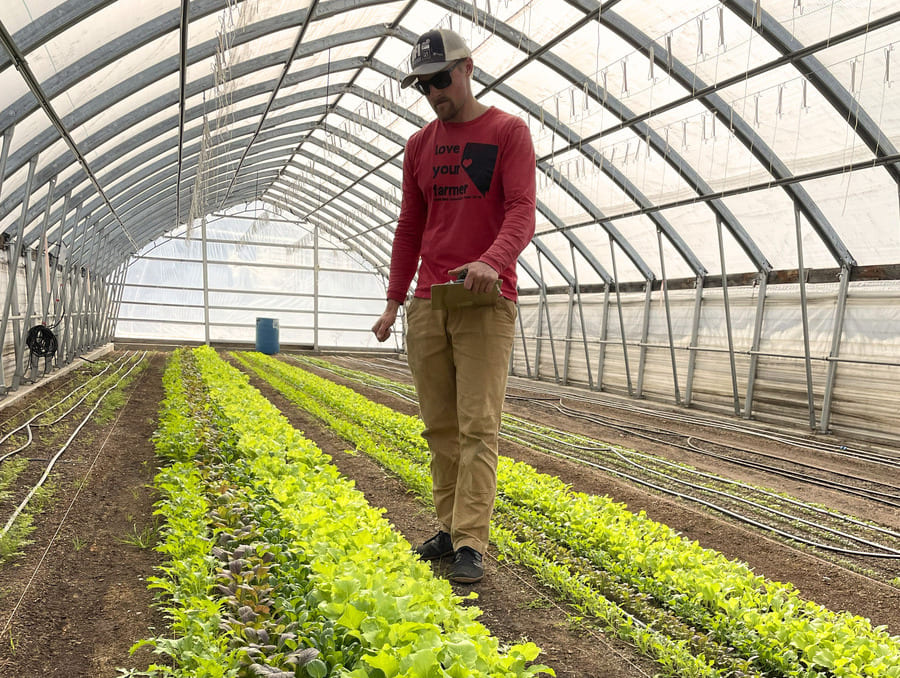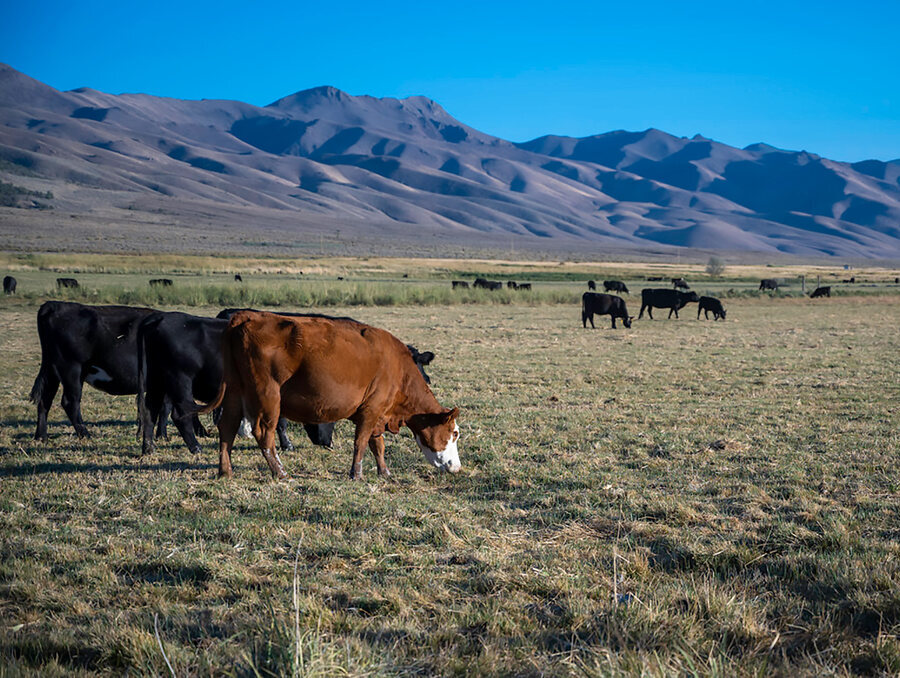Associate Professor in the Department of Geography Steph McAfee serves as Nevada’s State Climatologist. She recently published an update about Nevada’s drought, which was shared through the Living With Drought program and is published below. Living with Drought is a collaborative program that provides information to help Nevadans prepare for, respond to and recover from drought.
Only a fifth of the state remains in drought, and the remaining drought is relatively mild. Lake Mead is still low, but lake level outlooks are more promising than they have been in a long time.
Current drought conditions in Nevada and across the West
Western US drought has been drastically reduced over the winter and early spring. Large swathes of Nevada are Abnormally Dry (D0) or even drought-free. Moderate Drought (D1) remains in Pershing County and is more widespread in southern Nevada, with a relatively small area of Severe Drought (D2) in central Clark County. At this time last year, the entire state was in Severe (D2) to Exceptional (D4) Drought.
Drought has also resolved over much of California and across the Colorado River basin. Drought does remain in eastern Oregon, northern Idaho and Montana and through eastern Wyoming, Colorado and New Mexico. Over the last month, there were one and even two category improvements in Nevada, California and Utah, as well as further north. These recent improvements contributed to two to five class improvements over much of Nevada, California and Utah.
After months of above normal precipitation, April was drier than usual. Much of the state received less than a third of its usual April rain and snow, and no part of the state had a wetter than normal month. Not that anyone was likely to complain.
Temperatures remained cooler than normal, however, over the northern two-thirds of the state. Far northeastern Nevada had average temperatures 2-3°F below normal. Temperatures were above normal in southern Nevada and scattered areas in the central part of the state.
Snowpack has remained well above normal across the Sierra Nevada, the Great Basin and the Upper Colorado River basin. In many basins, the snowpack is still two to three times the normal amount for late April. This is 200 - 300% of a lower normal than on April 1, and the snowpack has started to melt, but there is still an impressive amount of water in the mountains.
In the Carson River Basin, the snowpack held 49.7" of water on April 30. The usual peak snowpack in late March is less than half of that. The Lower Humboldt did not have a record-breaking snowpack this year. However, as of late April, there was still a bit more snow on the ground than there usually is in late March, when the snowpack is at its peak.
For perspective, the Lake Tahoe Basin's combined snowpack and lake water storage (above the rim) is more than enough to fill Tahoe to its maximum capacity.
Soil Moisture
From Esmeralda to Washoe County, in north-central Nevada, and along the eastern edges of White Pine and Lincoln counties, soils are wetter to much wetter than normal. There are apparently persistent areas of dry soils in Elko County (Elko did look pretty dry when I was there a few weeks ago) and in southern Nye and Clark counties.
Water levels in Lake Tahoe and most of the Truckee reservoirs were near or above normal for late April. Reservoirs in the Carson and Walker Basins are a bit lower than normal, but there is still a lot of snow up high in those basins. Rye Patch Reservoir remains very low at only 6% of capacity. Lake Mead is also lower than normal, but there is good news. Current lake levels are right around 1,045', but under the most likely inflow scenario, water levels are forecast to increase steadily through the spring and summer, leveling off between 1,065 and 1,070'. This would still be in shortage condition, but the less severe Shortage Condition 1. The November 2022 24-month study projected that the water level would fall to 1,025' by late summer 2023, so water levels rising around 20' by late summer is very good news indeed.
In the meantime, many streams and rivers are running very high, and the water is cold. That's a dangerous combination, so be careful. It's not a great time for river swimming— for humans or dogs, so make good choices for your furry family members.
Looking forward
The Climate Prediction Center's May - July outlook is less informative than might be desired. All of Nevada is deemed to have Equal Chances of wet, dry, or normal amounts of precipitation and Equal Chances of cooler than normal, warmer than normal or normal temperatures. It's just a tough season for forecasting.
The remaining dot of drought in Pershing County is likely to resolve in the next three months. But drought will probably remain in southern Nevada, given the current drought conditions and the fact that there aren't strong indications that the monsoon will be wet.
So, do wet conditions mean that it will be a quiet fire year? The relationship between fire and drought in Nevada is complicated. If you're curious, you can read more about why. But, if you just want to know how things will shake out…
The fire season is likely to get off to a slow start in Nevada. There's still quite a bit of snow around at higher elevations, which does tend to keep fire in check. The wet winter has also left soils and vegetation with ample moisture, also reducing the risk of fire. The National Interagency Coordination Center indicates normal or below normal chances of major wildfires across Nevada and California through May and into June. However, wet winters can mean lots of grass and high fire risk at lower elevations. In parts of northwest Nevada where the winter wasn't as wet, there's some remaining "carryover fuel" from last year. As a result, the risk of major fires will likely be higher than normal by July in northwestern Nevada. Fire risk may increase in other low and mid-elevation areas throughout the state as we progress into summer.
May is Wildfire Awareness Month, and Living With Fire has a full calendar of events.















